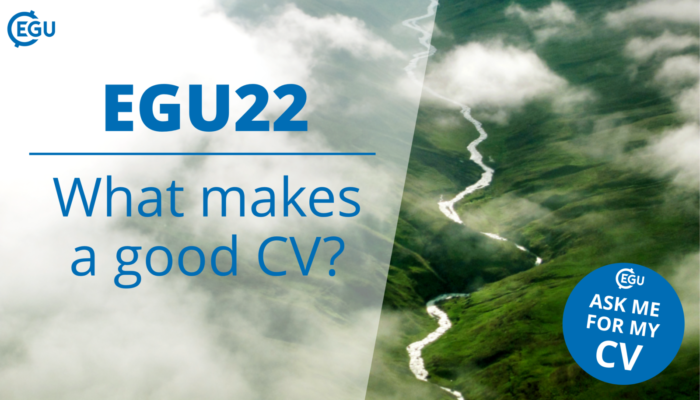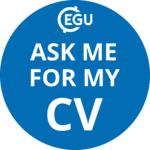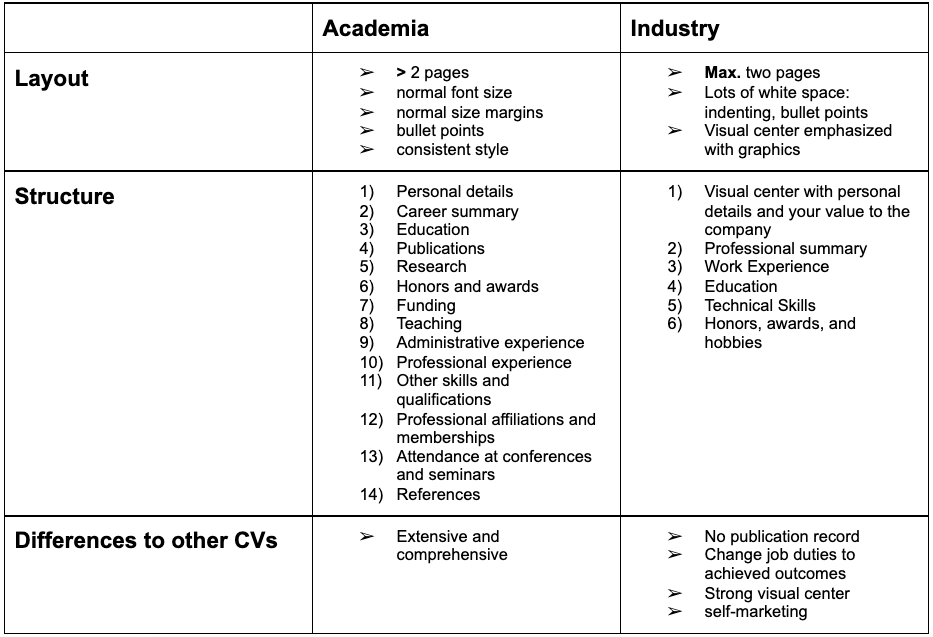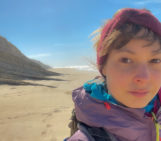
 This year for EGU22 we wanted to make participation in the Jobs and Careers events equally accesible whether you are participating remotely or on-site, so we added the ‘Ask me for my CV’ sticker that you can put in your profile to let people know that your CV is available. But what about the actual CV itself? Seismology Division Early Career Scientist Michaela Wenner, supported by the Jobs and Careers group of the Early Career Scientists collected some of the best advice from around the internet to help you create a perfectly tailored CV!
This year for EGU22 we wanted to make participation in the Jobs and Careers events equally accesible whether you are participating remotely or on-site, so we added the ‘Ask me for my CV’ sticker that you can put in your profile to let people know that your CV is available. But what about the actual CV itself? Seismology Division Early Career Scientist Michaela Wenner, supported by the Jobs and Careers group of the Early Career Scientists collected some of the best advice from around the internet to help you create a perfectly tailored CV!
The art of writing a perfectly tailored CV
None of us can get around writing an application for a desired position, whether it’s after our undergraduate degree, graduate degree, or postgraduate studies. However, the type of CV you create and its content differs significantly depending on the job and area you want to work in. Therefore, we in EGU Early Career Scientist (ECS) Jobs and Careers group have tried to compile a short guide on the most important things to consider when applying for an academic versus an industry job, and compiled a shortlist of helpful websites and blog posts to guide you in your task!
Differences in design
A very obvious, but also often tricky part of creating any CV is the design or layout. Theoretically, the design should not matter too much, but with a well-designed CV, you make sure of a great first good impression and show that you care about the presentation of your work.
There are a few things that, no matter what position or in which field you are applying for, are standard:
- At the beginning of your CV, put your contact information – no matter in which form or style.
- Choose easy to read font in one size and moderate colors (e.g., grey or black).
- Have clear and consistent indents (no indents with spaces, use tabs); you want your layout to be visually logical and consistent.
Apart from those standard things, you are pretty free to design your CV however you want. A good tip is to look online or ask for CVs from colleagues and friends and get inspired by their CVs. Also, inform yourself about what is wanted in the industry and the type of job you are applying for. The requirements for a position in media design or marketing will certainly be very different from for a position in computer science.
Differences in content
It is important to realise that not only will your application’s design need to change depending on the job you are applying for, but also its content. This is especially true for applicants at a later stage in your career.
Generally speaking, there are two types of CVs: the skill-focused and the work-focused. As the name already suggests, the former focuses on the skills you have attained during your career. This might be soft skills such as project management and group leadership or hard skills such as handling a specific program (e.g., Adobe Illustrator) or programming language (e.g., Python). In contrast, the work-focused CV focuses on projects you were working on and your expertise in a specific field. As you might have realised, the skill-focused CV is most commonly used for career changers, restarters, and after graduation. With this CV, you show that you might not be an expert in the field you are applying for, but you have a list of transferable skills that will allow a smooth transition. The work-focused one is more suited for taking a step further in your chosen career path where your work builds on your former experience.
Standard CVs in industry should not be more than two pages. An academic CV however, should be extensive and comprehensive and can therefore be much longer.
The further you are in your career, the more experience you gain – this is a given. And all the experiences you have had shape you into the person you are now – both personally and professionally. However, not all experiences are worth mentioning on your CV, especially when you apply for a job in industry, and your CV needs to be reduced to two pages. The importance of an internship you did, a course you attended or a medal you won depends very much on the type of job you are applying for. So, depending on the range of jobs you are applying for, it might be worth having different types of CVs. To tackle this problem, you could, for example, make a “Master CV” for yourself, where you write down every single small thing you did and achieved. Then, depending on where you apply and for what position, you can adjust your CV and delete less relevant things.
Remember: don’t make your application weaker by listing everything you have ever done; try to focus on the most relevant projects for this particular job. Side note: this interesting TED Talk gives a great explanation about how you dilute information by listing too many things compared to only the important ones.
Phrasing is key
Another important thing to consider is how you can make your profile look stronger for the job you are applying for by ‘framing’ it in a specific way. For example, for an academic position that requires fieldwork experience, it is essential to mention how often you have done fieldwork and what fieldwork it was. However, for a job in industry that has nothing to do with fieldwork, instead of mentioning the type of fieldwork, you can stress transferable skills like planning and project management that were required for the fieldwork.
For a condensed overview of the difference between academic and industry CVs, we compiled the main messages of several different websites and blog posts in Table 1. For more general details on what should go in a CV have a look at [1]. For a detailed overview of what should be included in an academic CV, consider consulting [2] and [3]. For more information on how academic and industry CVs differ and how to write a successful CV for a position in industry look at [4] and [5].
Table 1: Main layout and structure of academic and industry CVs.
References
[1]https://www.careers.govt.nz
[2]https://www.elsevier.com/connect/writing-an-effective-academic-cv
[3]https://www.vitae.ac.uk/researcher-careers/pursuing-an-academic-career/how-to-write-an-academic-cv
[4]https://cheekyscientist.com/difference-between-academic-cv-and-industry-resume/
[5]https://cheekyscientist.com/industry-resume/





Divine Foretia
Wow! very insightful content. I guess the same procedure applies when applying for either internship, volunteering position or fellowship.